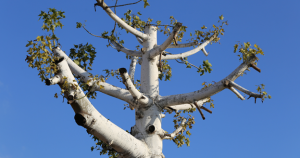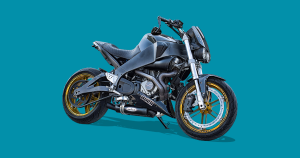Tree Trimming vs Topping: Knowing the Differences
Tree trimming vs topping are separate practices with very different results for tree health and beauty. Learn the difference between here.
Keeping trees healthy, safe, and beautiful takes regular care. But not everyone agrees on the best way to manage a tree’s size and shape.
Two methods people often debate over are tree trimming vs topping. They might sound the same, but they have very different effects on trees.
In this article, I’ll explain how trimming and topping work, what they do to a tree’s health, and which option is better for long-term growth.
With advice from tree experts, you’ll learn the right way to keep your trees strong, healthy, and beautiful for years to come.
What is Tree Topping?
Topping is the drastic removal of the branches, usually at the top of mature trees. This act reduces the remaining top branches to stubs.
Doing this makes the trees and their limbs become weak and creates a possible risk.
Cutting the leafy crowns of trees makes the trees lose their beauty. Without the crowns, it appears bare and unnatural.
Topping can also be called heading, tipping, stubbing, dehorning, hat-racking, and rounding over.

Why People Choose to Top Their Trees
Most homeowners believe it’s better to reduce the size of the trees on their property because the tree is now too big, and it might be potentially risky later on.
Unfortunately, the topping method is not sustainable for cutting the tree’s height and does not reduce the potential risk.
In fact, topping will make the risk higher in the long run.
Here are common reasons why homeowners go for tree topping:
- The trees are in contact with electrical wires
- Prevent tall trees from falling during a storm
- To improve the view around their home
It’s reasonable to want to care for your trees with these reasons stated above. But tree topping is not the ideal method for accomplishing these goals.
Reasons Why You Shouldn’t Top Your Trees
Tree topping might seem like a quick way to control a tree’s size, but it can do serious harm.
It leads to long-term and irreversible damage that’s often impossible to fix and is a major threat to the tree’s health.
Several negative effects can happen when you do tree topping, and it can result in tree death.
Here are some reasons why tree experts in County Cork strongly advise against topping:
Starvation
The leaves at the top of a tree make food through photosynthesis. When you cut off too much of the leafy crown, you take away the tree’s ability to feed itself.
Without enough leaves, the roots can’t get the nutrients and water they need, which slowly starves the tree and shortens its life.
Stress
A stressed tree reacts by growing shoots, or suckers, near the cuts. These shoots are weak because they’re only attached to the outer layers of the old branches.
They can break easily, and they often grow back to the tree’s original height, which makes topping pointless.
Sunburn
Leaves protect a tree’s bark from strong sunlight. When the canopy is removed, the bark is exposed to harsh heat and light.
This can cause sunburn under the bark, leading to bark splitting, cankers, and even branch death.
Weak limbs
After topping, the tree rushes to grow new branches from the cut points.
These new limbs are not as strong as the original ones and are more likely to break during storms.
This actually increases the risk of falling branches.
Insects
Large open cuts from topping are slow to heal. The tree releases chemical signals that attract insects.
Since the tree is already weak, it might not be able to fight off insect attacks.
Disease and decay
Big stubs left after topping often never heal properly. This leaves the tree open to diseases and decay fungi, which can spread quickly.
If a branch already has decay, cutting it will speed up the damage.
Ugliness
Topping ruins the natural shape of a tree. Instead of graceful branches, the tree ends up with stubby, uneven limbs.
Even if it regrows leaves, it can never fully return to its original beauty.
If you want healthy, safe, and attractive trees, topping should never be the answer.
You can work with tree experts who know how to prune the right way to protect your trees and make them last for years to come.

Tree Trimming: The Healthy Alternative
Topping a tree is only just a temporary solution to oversized trees. And, eventually, the method can be a costly mistake.
You’ll have to give extra care to the tree for it to stay alive, or worst case, it’ll eventually have to be removed.
But tree trimming is the right and ethical way to take care of your tree and maintain its health.
Trimming is when specific dead or sick branches are cut off to benefit the whole tree.
Tree trimming will improve your yard’s appearance and allow your environment to thrive.
Benefits of Tree Trimming
Trimming is often referred to as pruning when it is related to the tree’s health. Here are the benefits of trimming:
- Healthier trees: Trimming overgrown trees strengthens them and boosts their chances of survival
- Hazard prevention: Properly removing overgrown branches reduces the risk of them falling on someone, preventing danger to people and your property.
- Cheaper cost: You save money by preventing possible harm to people and your property.
- Early detection of tree problems: Frequently trimming trees helps you detect any problems or diseases that need to be treated. If you find it on time, the better.
- Increased sun exposure: Tree trimming boosts sun exposure and air circulation. This helps improve tree and environmental health.
- Higher property value: Trimming your tree makes it attractive and healthy-looking. They make your property appealing to homeowners. And if you’re looking to sell, it’ll increase the value of your home.
Conclusion on Tree Trimming vs Topping
If you were searching online for the tree trimming vs topping difference, everything you read here just gives you a much focused view.
When it comes to tree care, it’s important to use the right technique.
As we’ve discussed, tree trimming is a beneficial technique. Its controlled process helps to improve tree health and longevity.
Tree topping is a harmful and risky practice that causes permanent damage to the tree, weak limbs, starvation, ugliness, sunburn, and so on.



